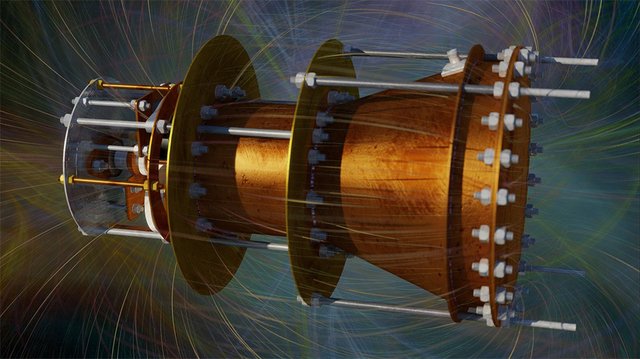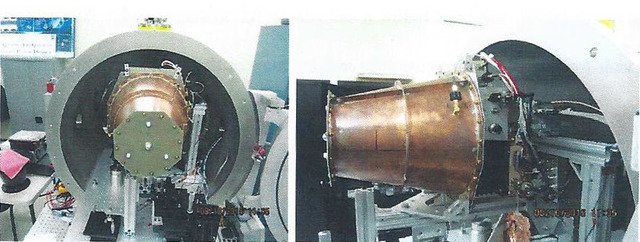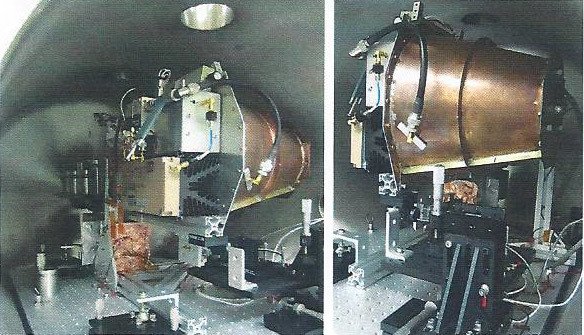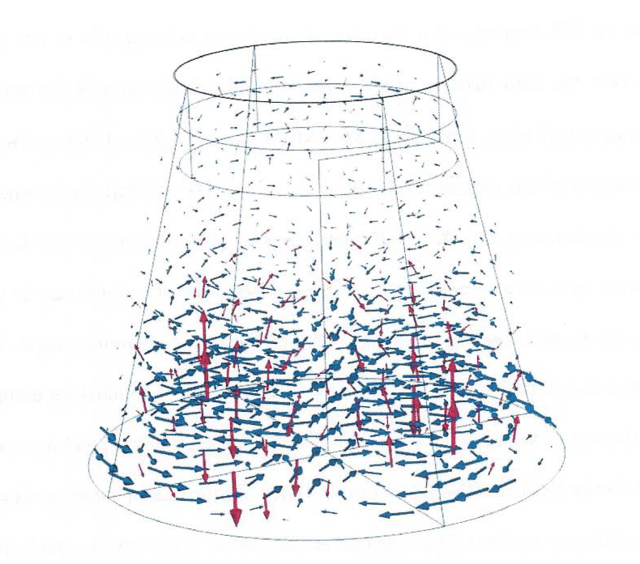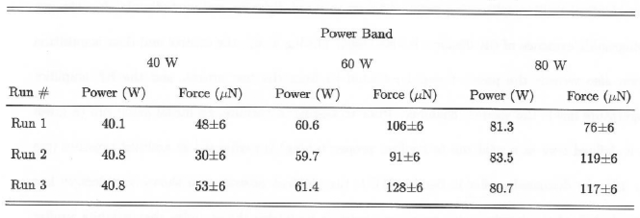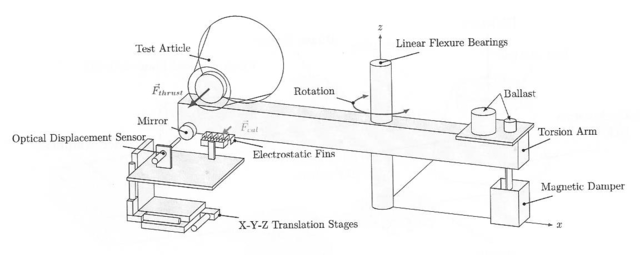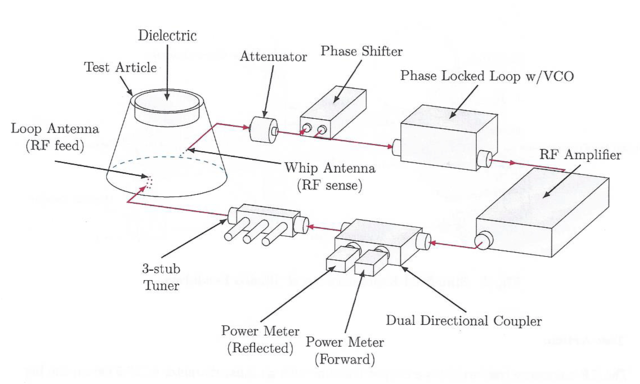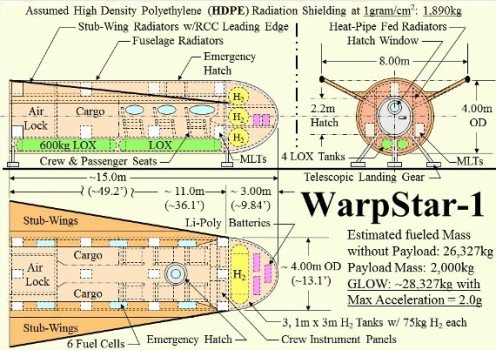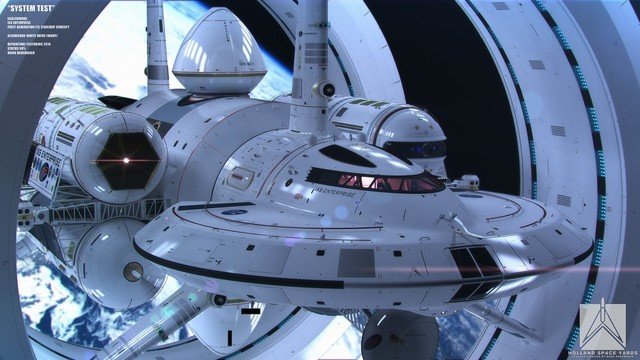NASA has published a report on successful tests EmDrive
Scientists and engineers since 2001, continue to argue about the possibility of the existence of the electromagnetic motor emdrive, which creates a draft in a closed loop, without the exhaust. This engine seems to violate the law of conservation of momentum. On the other hand, but dozens of tests show the de facto its performance in spite of Newtonian physics. According to scientific principles, can not be considered workable engine if there is no generally accepted explanation of its operation. Therefore, experiments are underway.
With a strange engine experimenting not only enthusiasts. The tests take place at NASA. Working in a strange principle, the engine produces thrust even in a vacuum where excluded any thermal convection.
Test set EmDrive laboratory Lyndon B. Johnson Space Center
According to the principle of work EmDrive, the magnetron generates microwave energy of their vibrations is stored in the resonator high Q, and the fact of standing wave electromagnetic oscillations in the closed cavity of the special form is the source of traction. The physical principle of operation is not clear until the end.
Meanwhile, the network now has got an official report by NASA on the engine test. The authors of the report - the staff Lyndon B. Johnson Space Center. This is NASA's center for the development of manned spacecraft near Houston.
Two months ago, NASA Spaceflight forum mentioned this scientific paper entitled "Measurement of Impulsive Thrust from a Closed Radio FrequencyCavity in Vacuum." It was rumored that she passed an independent examination and will soon be published by the American Institute of Aeronautics and Astronautics (AIAA). The authors stated Harold White, Paul March, James Lawrence, Jerry Vera, Andre Sylvester, David Brady, Paul Bail. All - employees Space Center. Lyndon Johnson.
Power lines cross the magnetic flux (Transverse Magnetic 212 Mode) in a cavity filled with a dielectric. The red lines represent the electric field, blue lines - magnetic field. Illustration of a scientific article " Measurement of Impulsive Thrust from a Closed Radio FrequencyCavity in Vacuum "
The article stated that EmDrive traction engine developed with a power factor of 1,2 ± 0,1 mN / kW.
The engine really works, and with the rod, he really can be used in space. EmDrive compare the results with other traditional motors. For example, the best Hall effect engine produces to 60 mN / kWh, i.e. about 50 times larger than EmDrive. On the other hand, solar sails and photonic engines - also without fuel power plants - generates thrust by two orders of magnitude lower than EmDrive (3,37-6,67 mN / kWh).
NASA to test engine in a laboratory test rig based on the torsion pendulum was constructed.
Simplified diagram of the test set on the basis of a torsion pendulum
A block diagram of the test set
NASA has published a report shows that laboratory tests EmDrive completed - and the engine proved its efficiency. The next step should be his test in space.
Spacecraft with an engine of this type can be sent over long distances - it will be even more compelling visual evidence of work EmDrive.
Before actual operation EmDrive engineers will work to improve the efficiency and thrust of the engine. According to the calculations of enthusiasts, if increase the capacity of the power plant EmDrive and provide its fuel cells with hydrogen and oxygen, then this engine on the ISS will reduce the amount of cargo missions to the fuel station, reduce the number of maneuvers to disperse the ISS, which will reduce the load on the supporting structures station and extend its service life.
For conventional geostationary satellite replacement of a conventional engine and fuel switching to EmDrive means losing weight from 3 tons to 1.3 tons.
And the most interesting. According to NASA engineer Paul Marcha (Paul March), a spacecraft with EmDrive technology can surpass the specifications of conceptual ship with the first version of the warp engine WarpStar-1 on the ship IXS Enterprise (IXS-110) from the Star Trek universe.
Specifications WarpStar-1
With this concept of historical engine started using warp technology and the development of humanity deep space.
IXS Enterprise (IXS-110) departs from the docks
According to NASA engineer estimated a ship EmDrive able to deliver six passengers and luggage from the Earth to the Moon, and then go back to the four-hour interval. Engineers believe that the improvement of power plant EmDrive nuclear fuel will reduce the flight to Mars to 70 days.
Report NASA test results EmDrive:
https://drive.google.com/file/d/0B7kgKijo-p0ibm94VUY0TVktQlU/view
Referenced Materials:
- http://emdrive.wiki/Experimental_Results
- http://www.digitaltrends.com/cool-tech/researchers-conduct-successful-new-tests-of-emdrive/
- http://www.sciencedirect.com/science/article/pii/S0094576515002726
- https://drive.google.com/file/d/0B7kgKijo-p0ibm94VUY0TVktQlU/view
- http://www.nasa.gov/centers/johnson/home/index.html
- http://www.nasaspaceflight.com/2015/04/evaluating-nasas-futuristic-em-drive/
- https://www.nasaspaceflight.com/2012/04/atv-3-raises-iss-400km-reboost-power-loss-latest/
- http://www.nasaspaceflight.com/2015/04/evaluating-nasas-futuristic-em-drive/
